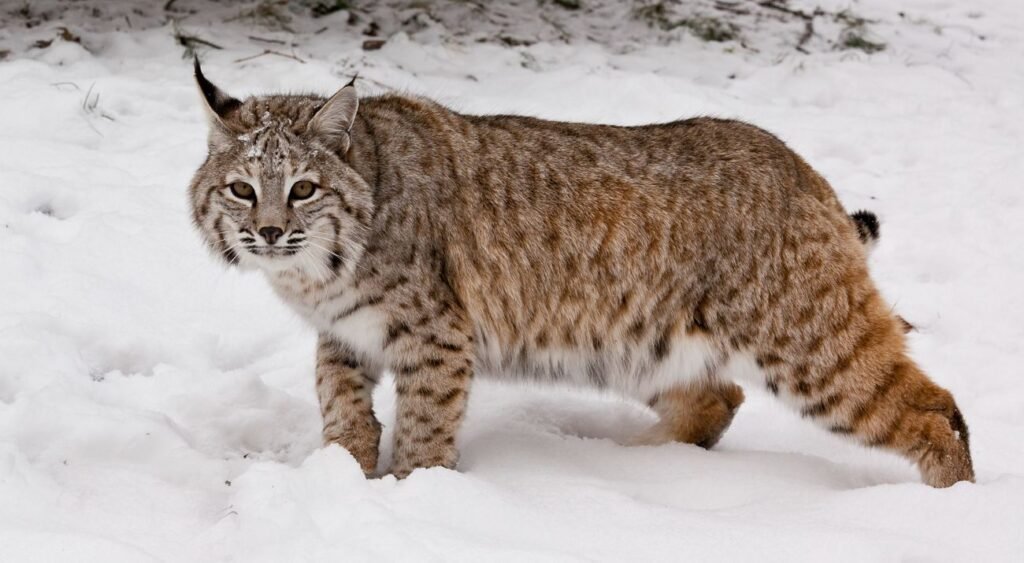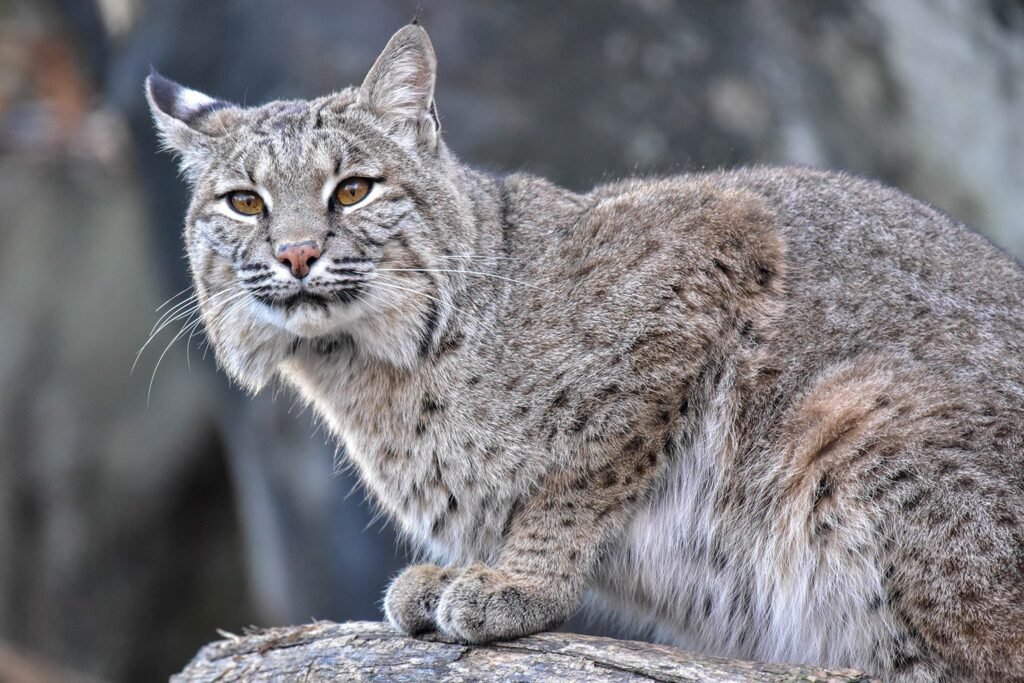
The bobcat, Lynx rufus, is a medium-sized wild cat widely distributed across North America, from southern Canada through the continental United States and into northern Mexico. Named for its distinctive short, “bobbed” tail, this adaptable feline is characterized by its bu to brown coat, one marked with black spots or bars, and prominent facial fur and ear tufts. Bobcats are incredibly versatile, thriving in a wide variety of habitats including forests, swamps, deserts, mountains, and even suburban edges. Primarily nocturnal and solitary, they are expert hunters, relying on stealth and ambush tactics to catch their diverse prey, which includes rabbits, rodents, birds, and occasionally larger animals like deer.

The bobcat plays a vital ecological role as an effective predator within its many North American ecosystems. As a mesopredator, it helps to control populations of small to medium-sized mammals and birds, which prevents overpopulation and maintains the overall health and balance of the food web. Their ability to adapt to diverse environments, including those influenced by human development, highlights their resilience and their contribution to maintaining biodiversity in a changing landscape. Furthermore, research indicates that bobcats can help reduce the transmission of certain zoonotic diseases by preying on key reservoir species. While listed as a species of “Least Concern” globally, their local populations can be impacted by habitat fragmentation, vehicle collisions, and rodenticides. Therefore, protecting bobcats is crucial not only for the survival of this remarkable and widespread wild cat but also for the ecological well-being and stability of North American ecosystems.
Every day, wild cats around the world face threats like habitat loss, poaching, and natural climate progression. But hope isn’t lost. With your support, we can protect these majestic animals and preserve their habitats.
Join our growing community of wildlife champions and help create a safer future for all 40 wild cat species.
Zoo-EV is a nonprofit organization dedicated to the protection and preservation of the world’s 40 wild cat species through education, community engagement, and conservation initiatives. Zoo-EV is recognized as a 501(c)(3) tax-exempt organization by the IRS, with the Employer Identification Number (EIN) 88-3636567.